Ken Stokes takes delivery of the Chord CompanyEpic and EpicX cables and puts them through their paces.
INTRODUCTION
I have not written many reviews of HiFi kit before, though I have though been active in groups and like lots of HiFi enthusiasts discussed the merits or otherwise of a fair amount of kit over the years. I may be relatively new to formal reviewing, having only written twice for HiFi Pig before, but as friends would confirm, I’m not new to sharing my opinions on HiFi!
Truth is I enjoy writing and have enjoyed putting together write-ups of kit before, for friends and various groups so I was really pleased when Stuart asked me if I’d like to review some Chord cables for HiFi Pig.
Initially, all I knew was that I would receive some Chord cables, but once I was sent further details I realised that I already had one of the listed cables in my rig anyway. The Chord Epic Digital RCA Coax was a cable I knew well as I’ve been using that cable for about two years. It is my current digital cable in use between my CD spinner and combined DAC/preamp. No need to send me that particular cable then! I was though eager to see how the rest of the Epic range would fit in my system.
I’ve long been a better cable advocate and already had what I considered to be carefully chosen, quality cables in use and so I looked forward to demo and review. I knew I would be able to assess this range from a standing start having swapped and changed cables numerous times over the years before arriving at my current choices – cables I’ve now been happy with for a good few years and I did feel that the Chord Epic cables were going to have to really impress to shift my opinion. The Chord Epic range and my current cables were all pitched at similar price points, except the Chord USB and my current premium budget USB. This immediately posed a question for me, what would be different with cables at similar price points and could a significantly more expensive USB be any better than a well-made premium, but budget USB cable?
To further add to my intrigue, I was then advised that these cables would be dispatched, but with a delay on the speaker cable because the speaker cable was a new to market product and needed to be made up for me. This new to market cable was a new version of the Epic, the EpicX speaker cable, launched at the very end of October. I had no idea what differences had been made to this new EpicX, only that a cable was to be made up per my request of banana terminations at amplifier and spades at speaker ends. HiFi Pig had an exclusive on reviewing this new speaker cable and so I felt pretty privileged. As my system is all digital, I didn’t need any analogue RCA cables. I was to receive a 5m Chord Epic USB, 2m Chord Epic XLR pair and 2.5m Chord EpicX speaker cable pair.
CONSTRUCTION
I already had a fair idea of what the construction of these Chord Epic cables would be like since as already mentioned, I already own a Chord Epic Digital RCA cable. However, to put in perspective for those not familiar with the Chord cable ranges, the Epic range is positioned in the middle of their cable range. These are not entry-level cables. They all have quality silver-plated terminations and it’s claimed heavier gauge conductors than Chord’s Shawline range and with improved shielding.
What is very clear on the first inspection is that these cables are all finished to a high standard, have solid and very secure custom Chord silver-plated terminations and fairly stiff and durable outer coverings.
All the Epic range have a visible outer weave that is silver in colour. The EpicX speaker cable is though a little different in appearance is significantly thicker and has what appears a clear tough outer covering with the ‘weave’ pattern visible through this darker stained outer. All the Epic range are clearly built to withstand knocks and bumps. As I run my USB from MacBook to DAC under the carpet I was pleased that it was a fairly robust cable with a tough outer. The EpicX speaker cable was a fairly stiff cable and although not a criticism, just an observation, it is worth bearing in mind this is not a cable for weaving around tight corners as it is a fairly stiff cable.
All the Epic range are terminated with custom terminations; silver plated and in unique Chord casings. They have the usual shrink wrap logo’d with the Chord name and arrows to denote direction, although the signal direction was not really an issue for me, since, of course, XLR’s, USB and custom terminations on the speaker cable made it pretty obvious which way they should fit. Perhaps more to relevant RCA to RCA or if speaker cables are terminated same each end, but as I say, not an issue in my case. Worth noting that for the EpicX speaker cable Chord are offering a custom termination service and choice of spade or banana terminations. Also, this service can be used at recognised dealers with the Chord termination equipment (called the Chord OhmicHex Gun) and retro fit to older cables is possible.
All the cables came in very well constructed zip up Cordura fabric style, round carry cases. Although these cables are far from entry level cables the cases are a nice touch. I’ve had cables costing more and had them arrive in plain cardboard boxes.
All the cables, except the EpicX speaker cable are shrink wrapped at each end. The EpicX has a custom outer with an additional black PVC outer that shields the final few inches and divides very neatly, covering the positive and negative conductors.
For the technically minded;
Epic Digital RCA (also available with BNC terminations). Available in custom lengths.
I have the RCA terminated cable. The terminations are silver plated and use the Chord tuned ARAY conductors and dual foil screen. Chord also say ‘’Whilst it’s the critical element in producing such outstanding cables, the other materials used to produce this cable have also been improved. The silver-plated conductors have been upgraded and the separate shields for send and return conductors are of a higher density.’’
Epic XLR. Available in custom lengths.
Again referring to Chord for the tech specification, they say these cables are based on the same heavy gauge silver plated, multi strand, oxygen free copper conductors as the Epic RCA cables, but with an additional extra conductor as per balanced XLR needs.This means that the performance is very similar to the Epic RCA cable.
Epic USB Available in custom lengths up to 5m.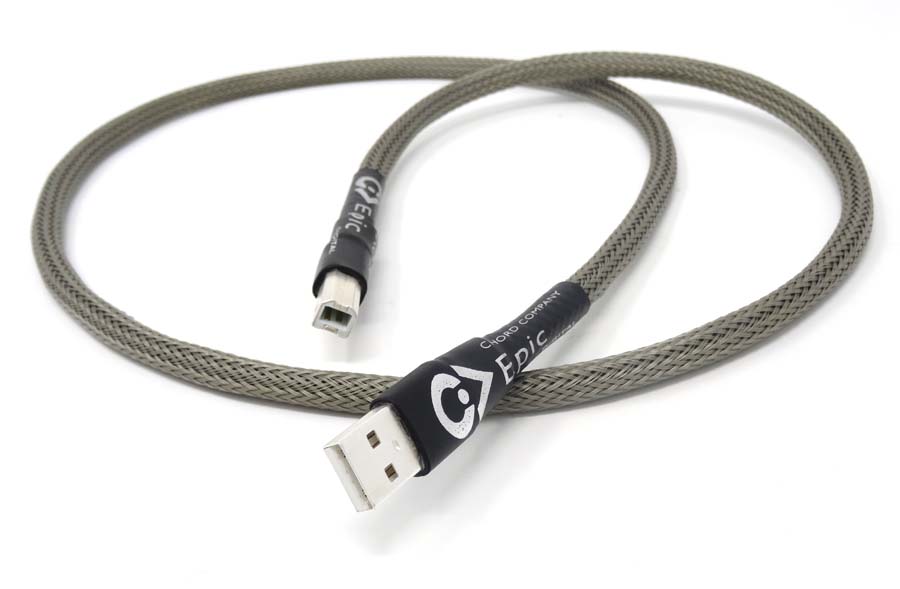
Chord say that the Epic USB bridges the performance gap that existed between the Shawline and Signature USB cables and features their unique Tuned ARAY conductor concept. Chord also say that the Epic USB is built in a very similar manner to the Signature Super ARAY USB and although the conductors are slightly different, in just about every other respect the same design philosophy is applied. The Epic USB contains four conductors, (two of which are individually shielded). Chord also say this cable has improved effective gauge silver-plated copper conductors and uprated PTFE insulation and that the earth shielding connection is further protected from high-frequency noise with a two-layer braided screen. Custom USB connectors (type A and B), silver-plated to Chord’s specifications in the UK, with all connections soldered by their engineers.
The EpicX speaker cable. Available in custom lengths and choice of terminations.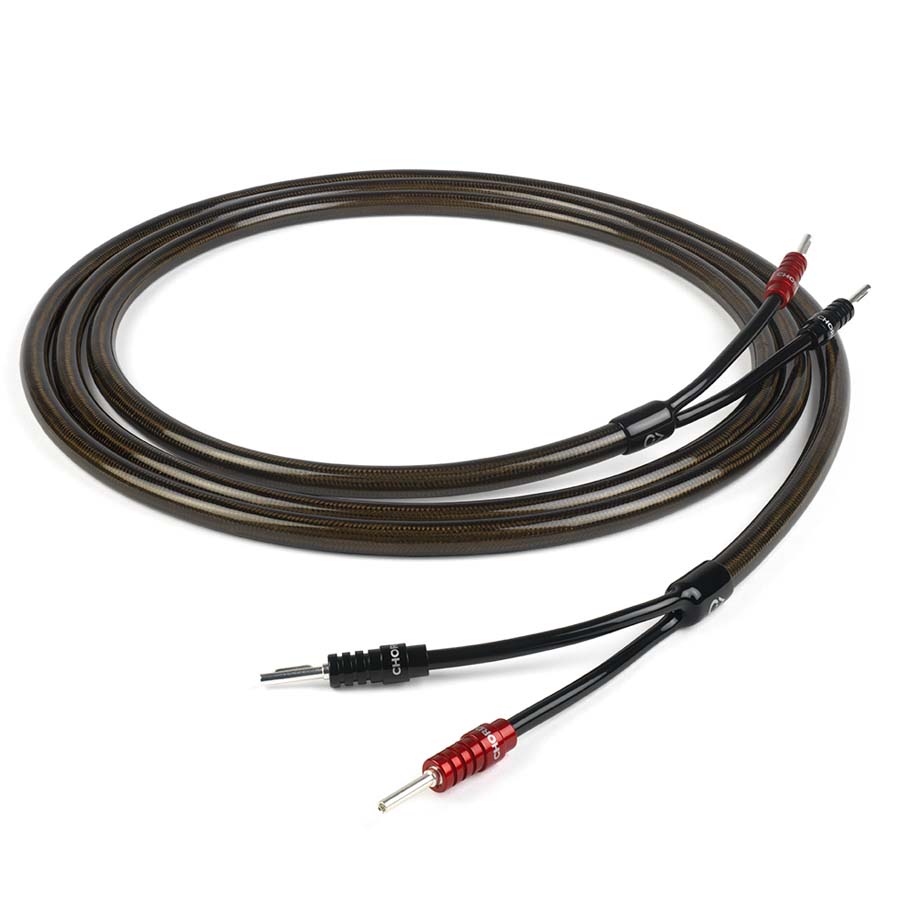
Chord says ‘’EpicX is based on our multi-award-winning Chord OdysseyX speaker cable. Both cables use 12 AWG oxygen-free copper negative and positive conductors, silver-plated and insulated with XLPE before an outer PVC jacket is applied. The key difference (and performance leap) is due to the effective high-frequency combination shield and translucent PVC jacket that is added to EpicX.’’
EpicX uses Chords branded ChordOhmic plugs, the Epic terminates with what Chord call ‘trousers’. This term did amuse me but does describe rather well the appearance where cables separate to allow positive and negative to separate at cable ends.
Worth noting that Chord are also offering ‘’In addition to factory terminations, the cable can also be professionally terminated by participating Chord Company dealers equipped with the new ChordOhmic Hex Gun tool; the service not only delivers tailor-made lengths, but it also jumps the build queue at the factory. Existing cables can also be upgraded with the new plugs, trousers and terminations, too.’’
SOUND QUALITY
My approach to testing any new kit is based on pretty well recognised approaches – a fairly straightforward approach. I first try to get some hours on new kit, in the case of these cables I was told that they had been ‘toasted’ for me by Chord prior to dispatch. However, because I knew I would have the luxury of having cables for at least a couple of months I knew I could take my time. Also, due to the staggered delivery with speaker cable dispatched later, I decided to try each cable individually first and then later try the whole loom once I had a feel for what each cable did or didn’t do.
Naturally, like most, I tend to find that over the course of playing a wide range of music I inevitably start to notice differences, least if there are differences to be heard! My ‘process’ is then about a mix of critical listening combined with more ‘relaxed’ listening sessions as I note any specific characteristics. I often re install my own ‘back to base kit’ to double check and always do a final retro critical listen against identified pieces of music that I felt highlighted differences.
Epic USB
Being brutally honest I didn’t expect any difference to be heard switching from my premium cost USB cable. My USB cable is well made and robust, not the cheapest with an RRP £80, but being tight with my wallet I’d bought in a bin sale at an audio fair for a fair bit less and only because it looked very robust! So why didn’t I expect a difference in SQ between this Epic USB and my premium USB cable? I’d read that USB cables can’t make a difference. I’d read articles on this by several writers whom I respect and they provided a range of reasons why the USB protocol simply doesn’t work in a way that means a cable can make a difference. They either work or they don’t being the gist of what I’d read! It’s packet sent data with error correction and buffering. Frankly that made sense to me.
However, I have also read about shielding and claims that particular conductors might create and be subject to general electrical interference causing possible negative influence on signals. Typically, claims seem to be expressed with the view that the data signal, those 1’s and 0’s are expressed as a stepped square wave electrical signal and still prone to the usual kind of electrical field interference that any electrical signal can be subject to. This despite that data being error corrected and buffered using the USB protocol. I don’t pretend to be an expert on any of this, in fact not even close. I was though prepared to contact Stuart at HiFi Pig and say I couldn’t review the USB…… I had doubt’s about spending on USB cables for the reasons mentioned above!
I was shocked though, fascinated to put to the test, but as I say, shocked. It honestly did not take long before I felt I was noticing differences. I did as I do, playing various well-trodden paths in terms of my test music pieces and switched back to my usual USB cable. In fact, I switched back numerous times because I was so sceptical. I know I will have friends who will give me some grief on this subject, but I realised I could not, in any fair way, tell Stuart at the ‘Pig HQ I couldn’t hear a difference in SQ when I could!
I am not going to discuss, as often happens in reviews like this, the nuances as per album X and album A (I will though list some of my test/demo selections in my conclusion). The difference, as I perceived, is really pretty easy to describe. As I listened to more and more of my favourite albums I realised that the sound quality, was, in simplest terms, cleaner. More defined separation between instruments and soundstage was also, I think as a consequence of this improved clarity and detail, spatially broader and deeper. Instruments and vocals were easier to define in terms of position. When I put my usual USB cable back into my system the most immediate difference was a ‘flattening’ of the sound stage and loss of micro detail. It’s not that this Epic USB cable ‘added’ anything, it seemed to me it removed a slight ‘fudging’ that had been present in the presentation with my usual USB cable, that ‘fudging’ for want of a better term blocking what was revealed by this cleaner Epic USB cable. I know there will be critics so the best I can say is try on a home demonstration. Decide for yourself.
Epic Digital RCA
I wasn’t sent this cable to review because it’s a cable that has been installed in my set up for a few years already. It is already my cable of choice, this does, of course, make me a little biased!
Going back to when I first demoed RCA digital I was, just as I was about USB, sceptical that a digital cable could make any difference, however, having demoed several I felt there must be some truth to arguments I’d heard that RCA digital was, as a protocol for digital transfer subject to potential electrical field interference. The argument being that RCA digital is real time streaming, with no error correction and very little, if any, buffering. That those 1’s and 0’s are as in USB represented by a square wave electrical signal and before decoding by a DAC, subject to possible electrical interference distortion of some sort. I decided to check this and wondered if I would detect any difference. At that time, I had a cable made up, very much an ‘it does what it says on the tin’ kind of offering.
I contacted my dealer and was sent several cables to try. The differences between my £15 budget cable, a Chord Shawline digital and several other cables I’d gathered together to try were really pretty apparent. I involved my wife in my critical listening tests which she hates! My wife hates ‘HiFi’, but loves music, critically though she has very good ears and prefers I don’t spend money so she makes a great neutral arbiter and frankly I prefer to have her onboard if I’m spending money! Even though I trust my wife ears I still wanted another independent opinion so I invited a friend over to compare notes. We agreed on differences without any real debate, my friend confirmed my wife and own conclusions. We all felt the Chord Epic digital had a more pronounced bottom-end and a slightly richer overall balance than the Chord Shawline. Both the Chord Shawline and Epic digital were very detailed and had a level of openness missing from all the other cables tried. We agreed that the two Chord cables left all the other sample cables standing.
Epic XLR
As I tried each of the Epic range of cables, I’d have to say that they all seem to share some fairly well-defined characteristics. The Epic XLR were, as per the two digital cables already discussed, open, detailed and clean. However, detail is not gained as a consequence of a loss of bass or richness through the mids. I’ve never been fond of hard or bright sounding systems or cables that are revealing by virtue of being light on bass. I find such a bias in the sound quality to be fatiguing. These cables are in my system open, detailed, crisp at the top, but nicely balanced with some serious depth to bass, bass though that has no sense of being wooly or overblown. I like bass, bass that can be felt with the thwack a kick drum deserves! These cables did not let me down. These Chord XLR cables showed less difference between my usual XLR cables than the previous discussed digital cables or the EpicX speaker cables, a slight difference in SQ, but I’d happily keep these Chord XLR’s in my rig and if I were choosing from scratch, I’d be very happy to have in my system.
EpicX
Switching out my usual speaker cable for the EpicX was a journey, initially, I wasn’t sure, but in retrospect I think this cable still needed some use before it settled. I again did all my usual retro switches and extended listening and am very glad I stuck with this cable. I know when kit is changed sometimes the impact of a different balance, different timbre to music can be a shock. After all, if something is different this can take a little getting used to. To start I actually wasn’t sure if I liked what this cable was doing. Maybe it needed more ‘toasting’, maybe I needed to get used to a different SQ or perhaps my system maybe just needed to settle. hankfully things did settle.
After around two weeks and some substantial hours I’d simply settled into listening to music. Any initial ‘overbearing’ I’d felt present, a slight brashness leading to a bit of listening fatigue had simply gone. I was though noticing a big lift in detail, crisper and sharper highs and equally more heft to bass. The bottom line though was that everything simply felt ‘more real’ as the expression goes. I was again surprised, but for very different reasons to my shock regarding the digital cables. I’m used to analogue cables offering different presentations, slightly different sound quality, this though isn’t slight and was confirmed with a vengeance when I conducted my first retro test, putting my usual speaker cable back into my rig my wife actually shouted from our kitchen demanding to know what I’d just done! The soundstage shrunk, the highs sounded muted and everything had a ‘woolliness’. Bass was bigger yes, but lacked definition in comparison. I literally couldn’t wait to put the EpicX back into my set up! I managed two days and decided I really didn’t see any point in not enjoying this EpicX so put it back.
CONCLUSION
I had built up to using all the Epic cables I’d been sent on a step by step basis with a ‘back to base’ retro critical with my own reference cables after each cable change. The difference though, on a final retro, taking out all but my Epic digital RCA (part of my back to base kit anyway) was astounding. After having gradually built up to installing the full Epic cable loom and getting used to that presentation, to then remove and go back in entirety to my reference rig was not subtle. I’ve long felt that small incremental changes of kit do ultimately add up and boy did it show! My ‘reference’ cables didn’t deserve the term reference any more, reference only in as much as they were my measure and back to base reference.
I wanted the Epic cables back where they had been and not in those nice Chord Cordura cases. The impact of the full loom – all those cables installed simply made my rig more transparent, more detailed, but without fatigue or any sense of harshness. More real. I could offer up all those usual ‘audiophile’ adjectives, but I think we are all very familiar and they just don’t do justice. I love the change these cables have brought to my rig, I’m hearing nuances in albums I’ve been listening to for forty plus years that I have literally never heard before. A depth and insight I’ve simply not experienced on my set up before. I’ve even been able to remove a couple of acoustic panels from behind my speakers that were there to calm a very slight overbearing bass. As an experiment and review process, I am now left a little dissatisfied with my back to base cables! I’m not sure I can offer any better recommendation than to say I’m now thinking about how I could make a few changes!
I have had these Epic cables now in my set up for months, I’ve listened to hundreds of hours of music, silver disc, streamed from Qobuz Studio and ripped FLAC using Audirvana for playback. We also use the same system for audio for our TV so my impression of these cables has not been based on a couple of weeks and a few forced listening sessions. These cables have certainly done the ‘long haul’ and have not been found lacking.
A few samples of my ‘critical listen’ albums would include;
John Martyn’s Church with One Bell, especially useful for assessing low bass
Ian Drury New Boots and Panties, a tight and lean mastering so useful to assess depth/range
Nick Drake, all his studio albums, useful for stripped-back acoustic and vocal
Jeff Buckley, Grace, my version a slightly ‘hard’ master, good for checking fatiguing or bright hi’s.
Miles Davis, Ascenseur pour l’échafaud, a superb remaster with lots of hi trumpet and rich tenor saxophone, intricate and complex layering, great for listening to complex overlaid instruments and sharp piercing brass.
I could go on listing albums I’ve referenced, everything from hard rock to complex jazz ensembles and Gregorian chants. I’m happy to say that nothing came out in my listening in any way detrimental. Thumbs up from me!
AT A GLANCE
Build Quality: Well made, absolutely no complaints, looks every bit the quality cables they are.
Sound Quality: In a word, superb. Clean, clear, detailed, but not fatiguing or brash. No shortage of bass heft and mid-range warmth.
Value for Money: When it comes to cables and this question my inclination is to say that only the listener can assess by listening and considering their own budget. I assessed these cables in my set up and did not find lacking. These cables are not cheap, but in my opinion, if they are in your budget, they are well worth an audition.
Pros: Excellent build and clear, detailed sound quality. Well balanced and easy to live with.
Cons: Not cheap, but then quality often isn’t. Might be beyond the budget of some and certainly, the 5m USB digital cable I had are above what many might consider being within their budget. However, my recommendation, if these cables are in budget, is to give them a demo.
Review Equipment: Roksan Caspian M2 CD player (transport only), MacBook Pro using Audirvana for ripped uncompressed FLAC files and Qobuz Studio for streamed. Benchmark Dac3 to Nord NC500 upgraded to MK2 spec’ Dual Mono Power Amp, Vienna Acoustics Beethoven Baby Grand SE Speakers, mains – Belden DIY Screened Mains Cables.
Prices:
USB: From £400
Digital RCA: From £400
XLR: From £450
EpicX Speaker Cable: from £60
Ken Stokes















































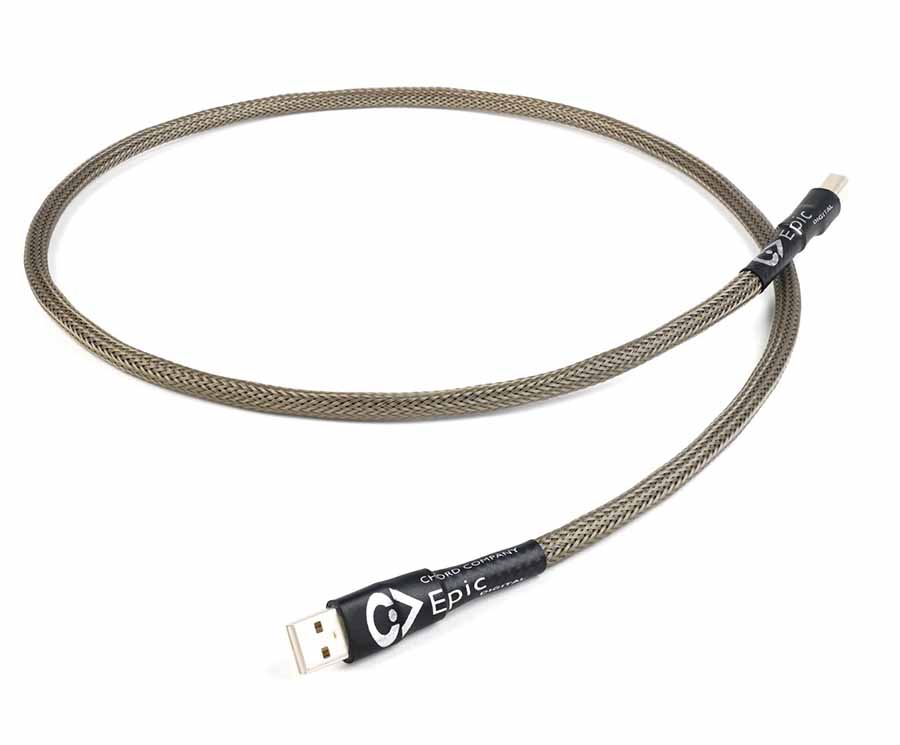
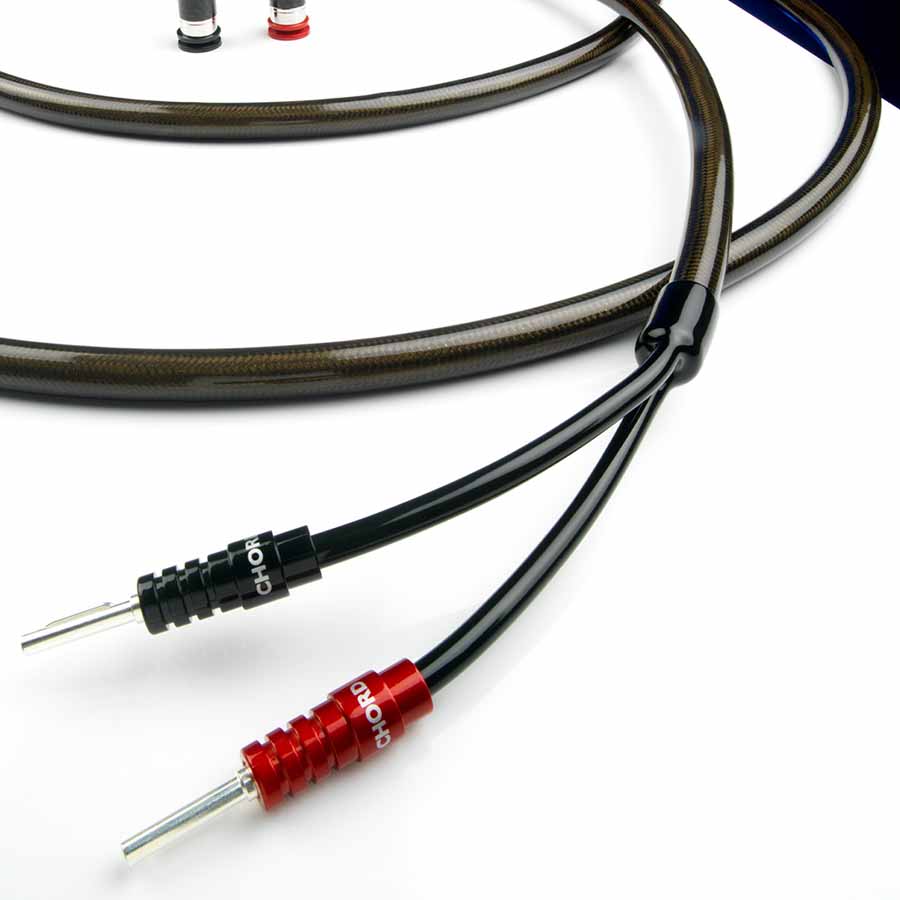
























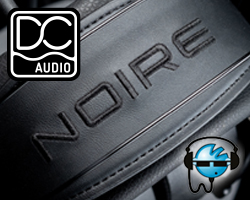

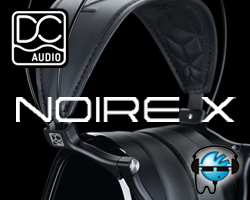





































































































You must be logged in to leave a reply.